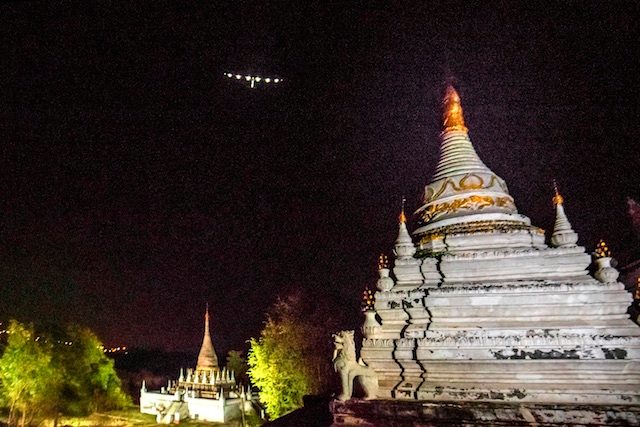SUMMARY
This is AI generated summarization, which may have errors. For context, always refer to the full article.

SHANGHAI, China – Solar Impulse 2 landed early Tuesday, March 31, in China, the world’s biggest carbon emitter, completing the fifth leg of its landmark global circumnavigation powered solely by the sun.
With pilot Bertrand Piccard at the controls, the revolutionary plane landed in Chongqing airport at 1:35 am local time (1735 GMT Monday) after a 20-and-a-half hour flight from Myanmar, its vast wingspan lit up by rows of lights.
The plane had been expected to make just a brief stop in the southwestern city and quickly travel on to Nanjing, about 270 km (170 miles) from Shanghai, but that was delayed due to weather and safety concerns, with the team now expecting to stay a few days waiting for better conditions for the trip east.
“We are tired but we are still very, very happy to be in Chongqing,” said mission engineer Michael Anger on the project’s website.
“In China it was demanding, this flight, especially for Bertrand but also for the team preparing two flights in a row and then this afternoon canceling the second flight due to bad weather in Nanjing.”
Piccard, one of the two Swiss pilots of the solar-powered plane, battled extreme cold as low as -20ºC (-4ºF) in the cockpit and the general unpredictabilities of flying above the mountainous Chinese provinces of Yunnan and Sichuan.
Flying at high altitude for most of the journey from Mandalay to Chongqing – 28,000 feet at its highest point – Piccard had to use additional oxygen on the 1,459-kilometer (907-mile) route.
The flight was the most difficult of the trip so far, Raymond Clerc, flight director for Solar Impulse, said on a video interview on the project’s website.
On a previous circumnavigation, Piccard passed over China in a specially designed balloon, but only after he flew to Beijing personally to negotiate the trip, and with conditions requiring the balloon to avoid large swathes of the country.
The team behind Solar Impulse 2, which has more than 17,000 solar cells built into its wings, hopes to promote green energy with the circumnavigation attempt.
Ridiculed by the aviation industry when it was first unveiled, the venture has since been hailed around the world, including by UN chief Ban Ki-moon.
The plane’s maiden global circumnavigation began in Abu Dhabi and is scheduled to take in 12 stops, with a total flight time of around 25 days spread over 5 months. – Rappler.com
Add a comment
How does this make you feel?
There are no comments yet. Add your comment to start the conversation.